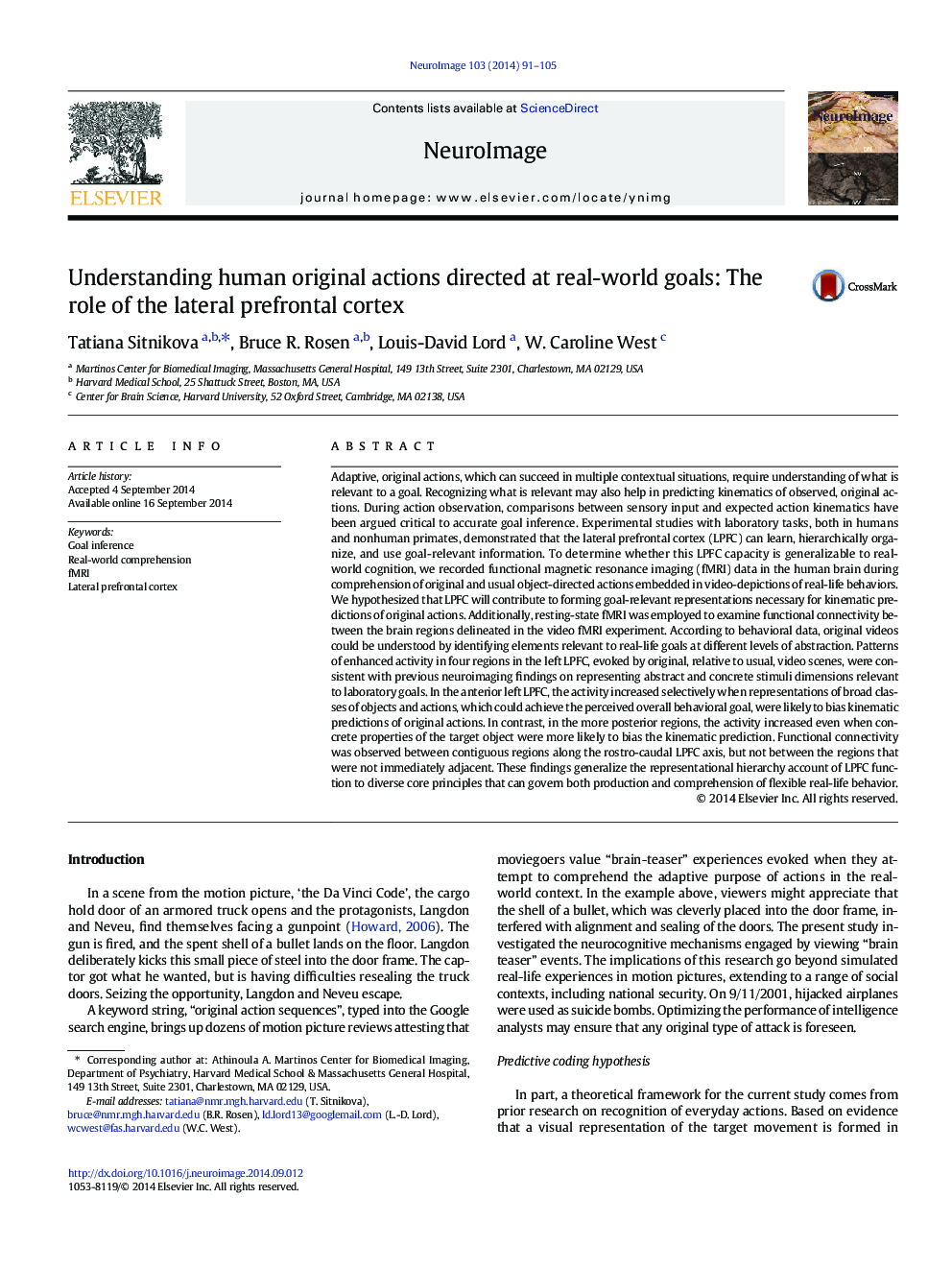| کد مقاله | کد نشریه | سال انتشار | مقاله انگلیسی | نسخه تمام متن |
|---|---|---|---|---|
| 6025697 | 1580904 | 2014 | 15 صفحه PDF | دانلود رایگان |
- Viewers of videos offered consistent interpretations for original realâworld actions.
- Some, but not all, original interpretations were biased by the abstract goal of overall behavior.
- Viewing original realâworld actions evoked greater left LPFC activity, relative to usual actions.
- Activity in the anterior left LPFC reflected processing of the abstract bias.
- LPFC areas recruited by the task displayed functional connectivity along rostroâcaudal axis.
Adaptive, original actions, which can succeed in multiple contextual situations, require understanding of what is relevant to a goal. Recognizing what is relevant may also help in predicting kinematics of observed, original actions. During action observation, comparisons between sensory input and expected action kinematics have been argued critical to accurate goal inference. Experimental studies with laboratory tasks, both in humans and nonhuman primates, demonstrated that the lateral prefrontal cortex (LPFC) can learn, hierarchically organize, and use goal-relevant information. To determine whether this LPFC capacity is generalizable to real-world cognition, we recorded functional magnetic resonance imaging (fMRI) data in the human brain during comprehension of original and usual object-directed actions embedded in video-depictions of real-life behaviors. We hypothesized that LPFC will contribute to forming goal-relevant representations necessary for kinematic predictions of original actions. Additionally, resting-state fMRI was employed to examine functional connectivity between the brain regions delineated in the video fMRI experiment. According to behavioral data, original videos could be understood by identifying elements relevant to real-life goals at different levels of abstraction. Patterns of enhanced activity in four regions in the left LPFC, evoked by original, relative to usual, video scenes, were consistent with previous neuroimaging findings on representing abstract and concrete stimuli dimensions relevant to laboratory goals. In the anterior left LPFC, the activity increased selectively when representations of broad classes of objects and actions, which could achieve the perceived overall behavioral goal, were likely to bias kinematic predictions of original actions. In contrast, in the more posterior regions, the activity increased even when concrete properties of the target object were more likely to bias the kinematic prediction. Functional connectivity was observed between contiguous regions along the rostro-caudal LPFC axis, but not between the regions that were not immediately adjacent. These findings generalize the representational hierarchy account of LPFC function to diverse core principles that can govern both production and comprehension of flexible real-life behavior.
Journal: NeuroImage - Volume 103, December 2014, Pages 91-105
